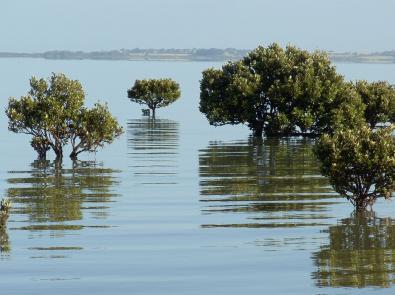Our Western Port environment research program continues to provide value – both to Melbourne Water and the Victorian government more broadly – by helping inform priorities. Read this case study to learn more.
Sustainable Development Goals:
Goal 14: Life below water
Background
Western Port has experienced extensive changes over the last 200 years, including clearing of the catchment, draining of large areas of swampland, and progressive agricultural, urban and industrial development.
Despite this, the area is recognised as an internationally important habitat for wildlife, and contains three of Victoria’s 13 marine national parks. Western Port’s varied and important natural habitats include:
- mudflats
- seagrass meadows
- mangroves
- saltmarshes
- rocky reefs.
Yet little research had been carried out on Western Port until 2011, when a major scientific review on the area was undertaken by Melbourne Water, the now Department of Energy, Environment and Climate Action (DEECA) and the Port Phillip and Westernport Catchment Management Authorities.
The resulting report identified priority research projects grouped into five themes:
- physical processes
- nutrients and sediments
- seagrasses
- toxicants
- iconic species.
Research focus
Since then, Melbourne Water, in collaboration with other state agencies and universities, has carried out a series of high- and medium-priority research projects on Western Port, with many either being completed or well underway. Our 2018 report, Understanding the Western Port Environment 2018, presents a synopsis of the research carried out, highlighting key findings across the priority research themes and providing links to the individual research reports.
Just as importantly, it also identifies current research needs – including: finer resolution mapping of erosion in the catchment, options for erosion control, determination of water quality targets for sediments and nutrients that support plant communities in the system and the recovery of seagrass.
Outcomes
In this way, the Western Port environment research program continues to provide value to Melbourne Water – and the Victorian government more broadly – by helping inform priorities such as our Healthy Waterways Strategy 2018 and the new sediment load targets for Western Port in the revised State Environment Protection Policy (Waters).
You may also like...
Western Port environment research
We’re undertaking strategic research projects to improve our knowledge of Western Port’s marine and coastal environments.
Delivering on the Sustainable Development Goals
This report outlines Melbourne Water's unwavering commitment to advancing sustainability through the United Nations Sustainable Development Goals (SDGs).




